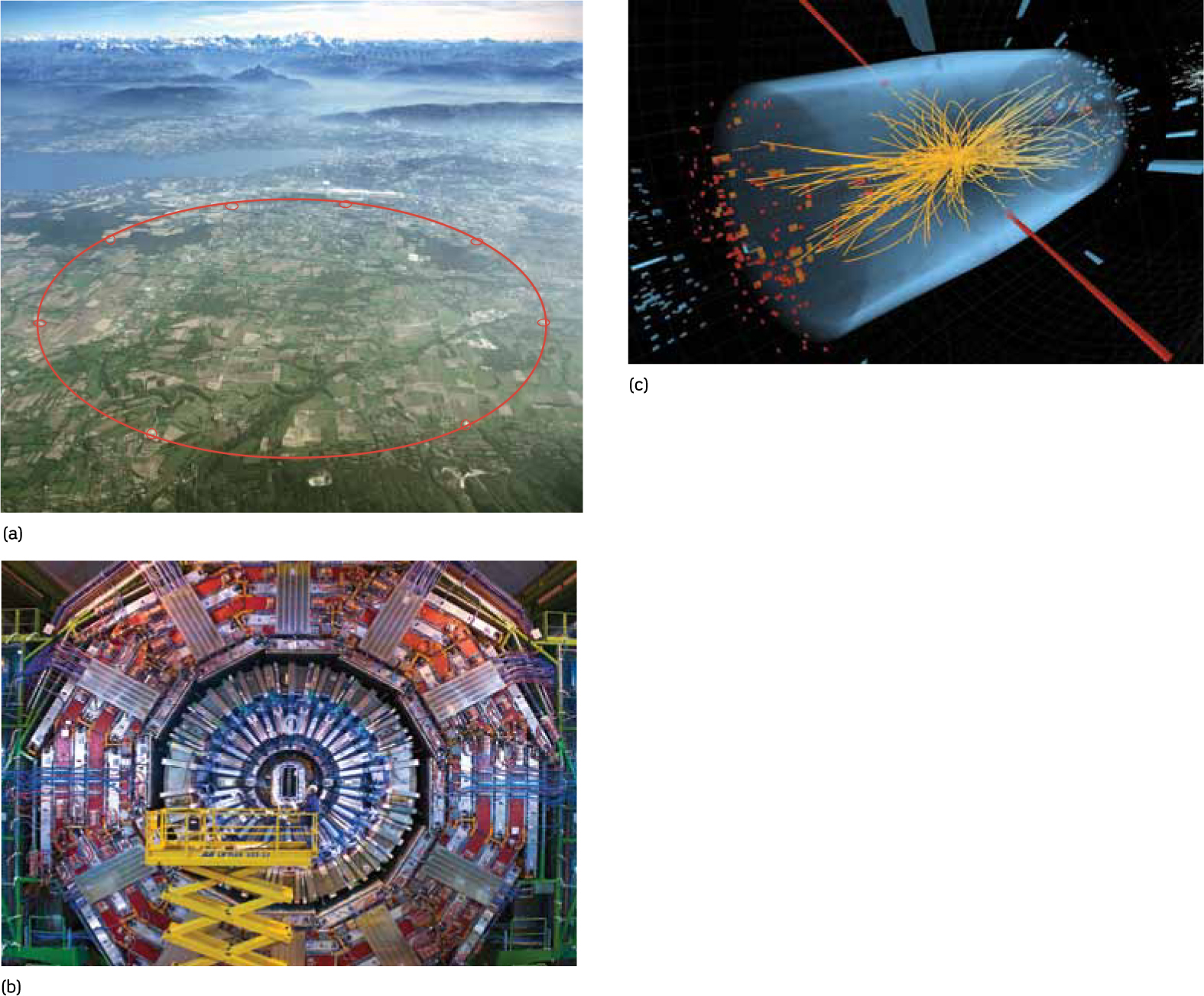
Figure 26-9: R I V U X G
Discovery of the Higgs Particle (a) The CERN particle collider is 27 km in diameter and straddles the border between Switzerland and France. Protons are accelerated to speeds very close to the speed of light in a tube (shown in red) that is around 100 m below ground. (b) When these protons collide, their energy produces numerous additional particles that are tracked and detected in enormous particle detectors as shown here (under construction). This is a direct result of converting energy to mass via E = mc2. (c) By analyzing the particle tracks (in yellow), the mass, charge, and various other properties of the particles can be determined. This is how new particles are discovered, including the Higgs particle.
Discovery of the Higgs Particle (a) The CERN particle collider is 27 km in diameter and straddles the border between Switzerland and France. Protons are accelerated to speeds very close to the speed of light in a tube (shown in red) that is around 100 m below ground. (b) When these protons collide, their energy produces numerous additional particles that are tracked and detected in enormous particle detectors as shown here (under construction). This is a direct result of converting energy to mass via E = mc2. (c) By analyzing the particle tracks (in yellow), the mass, charge, and various other properties of the particles can be determined. This is how new particles are discovered, including the Higgs particle.
(a, b: © 2001 CERN; c: HANDOUT/AFP/Getty Images/Newscom)